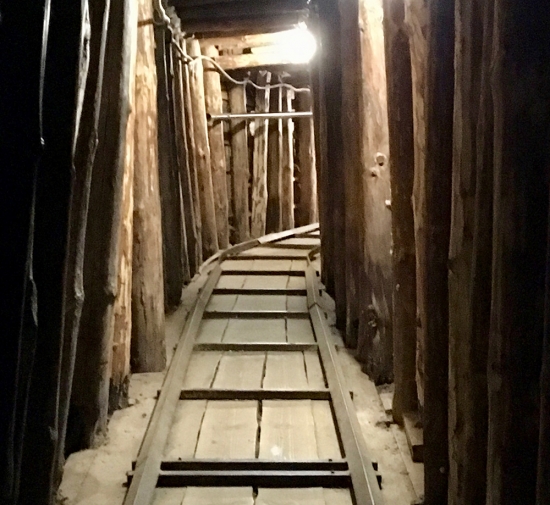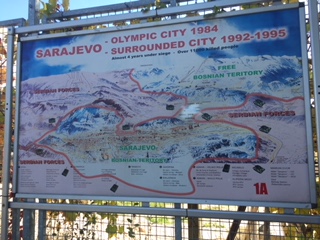The Siege of Sarajevo
Resad, our guide, told us of his experiences of the Siege of Sarajevo. He was a 19-year-old student when the siege began and he remembers the time when everything changed. His family were living in a block of flats along with Serbs. His Serbian best friend was living in the same block. It wasn’t safe to go out so schools would be conducted inside blocks of flats and other buildings.
Resad remembers that 18-55 year olds defended the city, while others were tasked with helping to ensure that the city still functioned. People would gather in the evenings to talk and play cards. Then one night all Serbs, including his best friend, disappeared – they had been shipped out. He never saw his friend again. It was clear that this still upset Resad greatly and I wondered how his best friend had felt.
Instead Resad was now part of a Bosnian Muslim militia with an AK47 in his hands, defending Sarajevo and the families still within it. They started to arm themselves with stolen and handmade weapons. You can listen to a full podcast interview with Resad about his experiences here.
Sarajevo was isolated. The United Nations had agreed to leave the airport in the hands of the Yugoslav army; Serbian tanks surrounded on all sides. The airport was important as it divided Bosnian-held territory. Nothing could come in to the airport; nothing could come out. The only way that Bosnian Muslims in territory either side of the airport could keep up vital communications and supplies was via a foot tunnel dug underneath the airfield. Today, this is blocked off within a radius of the airport, but sections have been preserved as a museum. We visited the tunnel to see how vital communications were kept open between territories during the siege.

A preserved section of tunnel
The siege of Sarajevo lasted for 1329 days and cost many lives. The city still bears the bullet-holed scars today. Resad remembered the cost of the siege to Sarajevo and likens the scene of Sarajevo in 1995 to the images that have recently come out of modern Syria. At this point I was struck by memories of the images that were shown across the world’s media while the world watched. Resad remembered that in the darkest days of the siege, food and water were scarce but the whole of Sarajevo came together as a family to share what little they had. There was no electricity and car tyres were burned for heat.
Eventually, US planes ended the siege. By that time, much of Sarajevo had been destroyed.
Ethnic and cultural relationships and tensions in the Balkans are complicated and date back centuries to the Ottoman seizure of the area. Resad explained that some Serbians saw the events of the 1990s as getting back what had been taken from them. The forced conversions that had taken place under Ottoman rule were seen as atrocities carried out by Muslims against Serb peoples. It was a fascinating journey into the conflict and I found myself wondering whether the average Serbian perspective matched Resad’s perception.
After a very interesting and thought-provoking but long day, we were all ready for dinner and rest before the next day of our experience where we would travel to Srebrenica and meet some of the survivors of events there and in other regions.
Map showing importance of Sarajevo airport:



